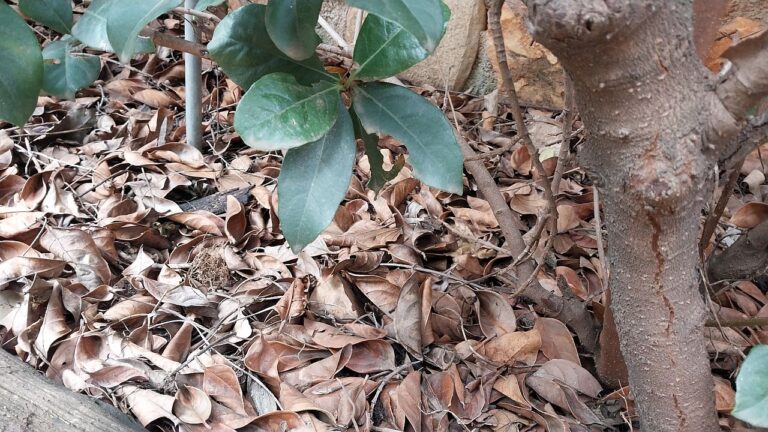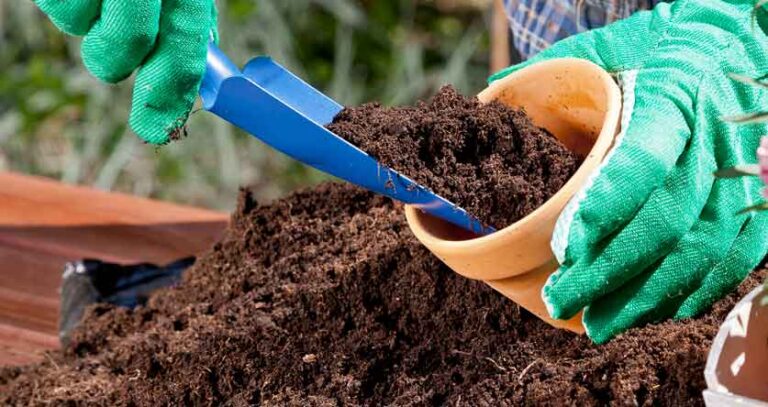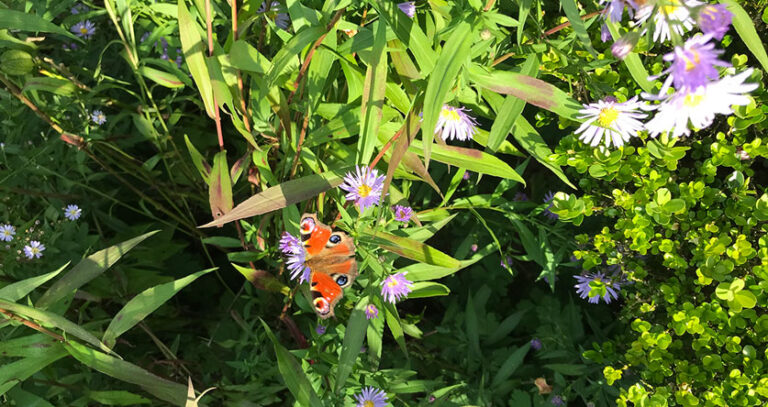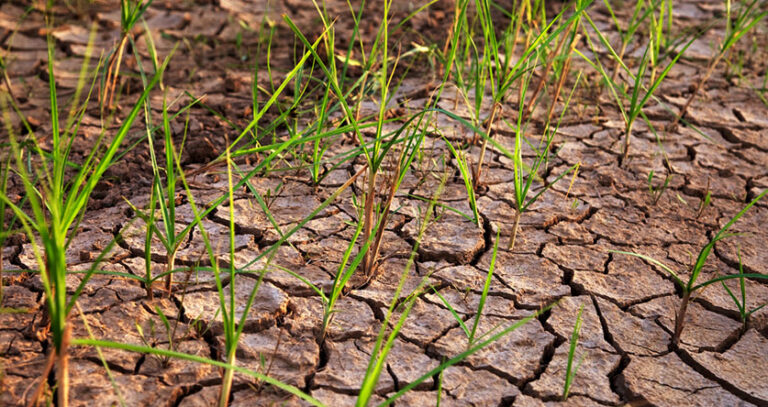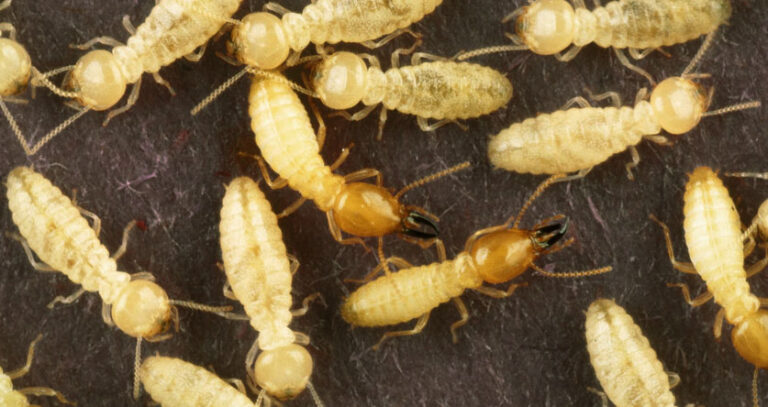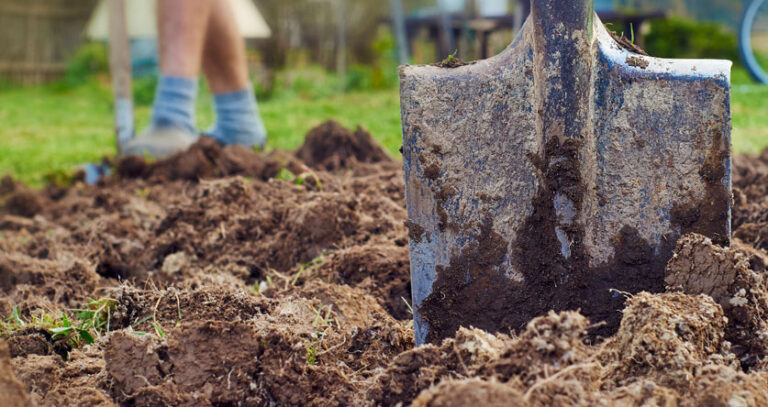How To Turn Bad Soil Into Good Healthy Soil (Easy Fixes!)
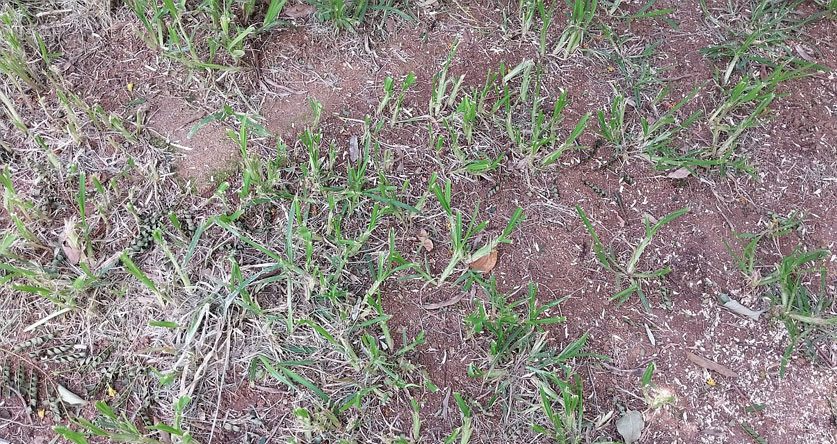
I was at a garden brunch recently. As I was about to bite into a smoked salmon blini, my host suddenly apologized for a bare patch of soil close to where we were sitting. He lamented that he couldn’t get anything to grow there, no matter how many plants he tried.
Perhaps you have a similar patch in your garden, and after several unsuccessful attempts to sustain plant life there, you’ve quit trying.
It’s just lousy soil; nothing you can do about it, you think, your dreams of a flourishing flowerbed or veggie patch crushed!
Don’t give up on your soil! You haven’t lost it forever. I’ve got a rehab program so you can turn bad soil into good.
Keep reading to discover how to create conditions to help plants thrive 🙂
How To Enrich Poor Soil
You’ve got 3 goals when enriching poor soil:
- Improve the soil’s structure – how soil particles are packed together.
- Increase the soil’s fertility – the nutrients it contains.
- Enhance the soil’s biodiversity – the bacteria, fungi, and creepy crawlies that live in it.
By boosting your soil’s structure, fertility, and biodiversity, you’ll improve its airflow, nutrient value, microorganism and insect populations, and ability to hold on to and drain water.
The result? You’ll find it easier to work with your soil and grow things in it.
Can You Make Bad Soil Good?
You can improve any soil – even that patch you’ve lost confidence in. But it won’t be an overnight transformation. And the results won’t last forever. So you must give your soil regular attention to keep it on the path to goodness!
Let’s dig into what you can do to bring out the best in your soil.
“Dig in”! Get it?… Ok, I know, bad joke 🙂
Fixing Bad Soil
So, you know the three goals for soil health: improve its structure, fertility, and biodiversity.
…But how?
You feed it superfoods! These aren’t the leafy greens and berries we turn to for a nutrient boost but instead compost and fertilizer.
Compost enhances the soil’s structure and biodiversity, and fertilizer adds essential nutrients.
What’s The Best Soil Improver?
Compost is the best soil amendment you can add to poor-quality soils. The benefits of compost are wide-reaching and help create an effective environment for healthy plants.
Compost is a multipurpose soil-improving wonder. This one soil supplement can fix a variety of soil problems.
The two types of troublesome soils gardeners dread most are:
- Soils that are too sandy.
- Grounds that are heavy in clay.
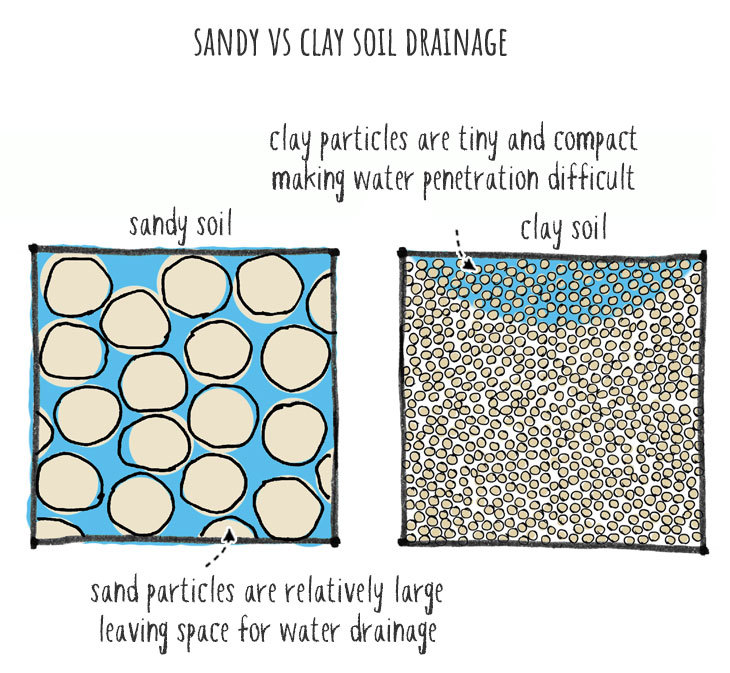
Sandy soil particles are large and round, whereas clay soil particles are tiny and flattish. As a result, sandy soil has big spaces between its large, round particles, and clay soil has little spaces between its small, flattish particles.
Soil needs plenty of space between its particles. The gaps store water and allow air to flow.
The problem with sandy soil is that its spaces are too big, so water flows right through. Sandy soil also doesn’t hold onto nutrients well.
Clay has the opposite problem: it clings to too much water because its spaces are too small to allow good drainage. Clay soil also lacks adequate aeration. Though, it does a better job of retaining nutrients than sandy soil.
Plants don’t tend to be happy in either type of ground since one is too dry and doesn’t have enough nutrients, and the other is too wet and lacks air.
You’ll know you’ve got sandy soil by these signs:
- It feels gritty and dry.
- It falls apart if you moisten it to form a ball and roll it between your palms.
On the other hand, these are signs that you’ve got too much clay:
- It feels greasy.
- If you moisten it to form a ball and roll it between your palms, it stays together. You can even roll it into a snake. It feels a lot like art clay.
Compost can effectively deal with both troublesome soil types! It helps sandy soils retain, and clay soils drain water.
Now that you know which soil type spoils your gardening aspirations let’s turn it good!
Note: You’ll need to regularly add compost to your soil to rebuild (and maintain) its structure. A once-yearly compost application should do the trick.
How To Turn Sandy Soil Into Good Soil
Adding compost to sandy soil will help it store water and nutrients better to keep plants healthy.
Work a layer of compost about an inch or 2 thick into the top 8 to 12 inches of soil using a digging fork or spade.
Tip: If you live at the seaside, choose plant-based compost over manure, as manure can add too much salt to your already salty sandy soil.
How To Turn Clay Soil Into Good Soil
Mixing compost with clay soil will allow air and water to move freely. Plus, compost will attract earthworms to the ground, and these wrigglers are brilliant at keeping earth well-drained.
To fix the problem, dig or fork in 2 to 3 inches of compost into the top 6 or 7 inches of soil.
I also have a more in-depth lesson on how to break down clay soil – follow the link.
How Do You Put Nutrients Back Into The Soil
Compost gives the soil nutrients, but not very much and not fast. Compost can be considered a slow-release fertilizer. So make fertilizer your go-to for a quick, powerful nutrient pick-me-up.
However, before you do this, I recommend testing your soil first to know exactly which nutrients your soil is lacking. Plants will only take up the nutrients they need, so any excess will wash away, causing a potential pollution problem. Use a simple test kit like this one to evaluate the situation first. (Amazon)
Suppose tests reveal that your soil is deficient in a nutrient your specific plants need (the biggies are nitrogen, phosphorus, and potassium). Then you can nourish your soil with a fertilizer high in the lacking nutrients. Fertilizers come in chemical and organic forms. The chemical types are sometimes more convenient, but the organic ones have fewer potential pitfalls.
Good to know: Compost’s microorganisms enhance fertilizers’ results by breaking down nutrients into bits plants can easily use.
Good Soil Vs. Bad Soil
How do you know if your soil is of decent or poor quality? Here’s a glance at the differences between good and bad soil so you can tell them apart:
| Good Soil | Bad Soil |
| Contain lots of organic matter | Contains no organic matter |
| Teeming with microorganisms and insects | Lacks microorganisms and insects |
| Moist but not soaked | Either waterlogged or dry |
| Has good airflow | Starved of air |
| It is easy to plant in | It’s difficult to cultivate |
| Smells earthy | Can smell sour (if it doesn’t get enough air) |
| Feels soft and crumbly | Feels gritty, greasy, or sticky |
| Rich dark brown color | Light brown color like dirt |
What Is Bad Soil?
Bad soil refuses to do what you want it to. It often gets waterlogged or dries out really quickly. As a result, it lacks the proper nutrients and structure for supporting soil life. And, of course, it isn’t easy to work with and doesn’t grow healthy plants.
What Does Bad Soil Look Like
These are the top 5 signs of lousy soil:
- It’s lifeless – no friendly insects and no plants.
- It lacks organic matter.
- It looks like dirt.
- It’s so dry it cracks or so wet it puddles.
- It’s compacted.
What Is Good Soil?
Good soil is a delight to work with, making growing veggies, trees, shrubs, and flowers a pleasure.
Good soil gives plant roots stability and enough (but not too much!) water, air, and nutrients. And it’s filled with organic matter and alive with helpful bacteria, fungi, and insects.
Now go fix your garden 🙂


